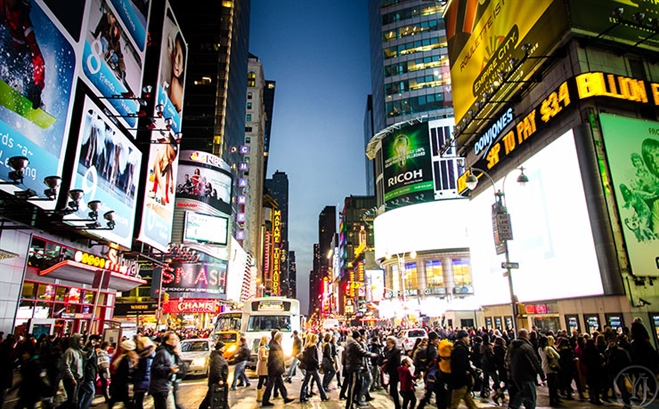New York City Releases 600+ Datasets
November 21, 2019 by Melissa Crowe

Photo credit: Yoann JEZEQUEL/Flickr
Litter basket inventory, bridge ratings, and Citi Bike rides don't appear to have much in common, but taken as a whole, they show government in action.
The city of New York's open data report chronicles 629 new datasets published in 2018 from 38 city agencies, including Department of Health and Mental Hygiene, Department of Transportation, and many others, on the city's open data portal.
With these records, the portal now boasts more than 2,000 datasets. Combined, they amount to billions of rows of data — all informative, and all potentially actionable to the portal's more than 1 million unique visitors.
New York City passed its open data policy in 2012, and three years later, in 2015, released its first Open Data for All report. Released annually, this report gives a view into not just what data is available on the portal, but how it's used.
"NYC Data at Work demonstrates just a few ways that public data — and the dedicated public servants who collect, manage, and analyze it — make New York City a better place to live," James Perazzo, Acting Director of the Mayor's Office of Data Analytics, said in a statement.
Some uses of public data are obvious solutions to inefficiencies. For instance, releasing data allows prospective employees who take the New York City Civil Service Exam to view their scores online, instead of journeying to lower Manhattan, where the exam results for decades were posted on a bulletin board.
New York City's billions of rows of data also are a boon to public safety, and the ability of the departments that respond when residents call 911 to get to locations speedily. For an ordinary driver, an unexpected street closure is a hassle. For emergency responders, those lost seconds are a matter of life or death.
That's why the Police and Fire Departments and other city agencies take advantage of the Citywise Street Centerline (CSCL), which offers geospatial data on city streets, including the address ranges on a given block, the direction of traffic, and locations of LinkNYC kiosks, which offer free WiFi. Multiple agencies take advantage of this public dataset, and many provide the data within it, such as the Department of Finance, City Council, and the Department of Buildings.
Driving Engagement
Data helps the city track progress, provide better services, and gain insight into system problems.
"Open Data for All" brings transparency to all aspects of New York City operations, making for a more efficient, collaborative, and resourceful government,"" said Samir Saini, Commissioner of the Department of Information Technology and Telecommunications, in a statement.
But, it isn't just city employees and government that benefit from widely available and accessible data. Startups, researchers, and all sorts of New York City residents can also access the data and benefit from it. This can lead to unveiling information on the city's convoluted sewers and visualizing Stop-and-Frisk incidents, as in the projects below, which were created by civic advocates.
"Access to the data also empowers entrepreneurs to innovate and build new tools that can benefit all New Yorkers," said Alby Bocanegra, Interim Chief Technology Officer in the Mayor's Office of the CTO, in a statement.
New York City plans to add even more new datasets to the portal in the upcoming year. The Open Data for All report details the plans for hundreds of additional datasets that will be added to the portal, including a map of the needle disposal sites, a list of capital projects funded by the City Council, and estimates on the number of adults exposed to secondhand smoke in their homes.